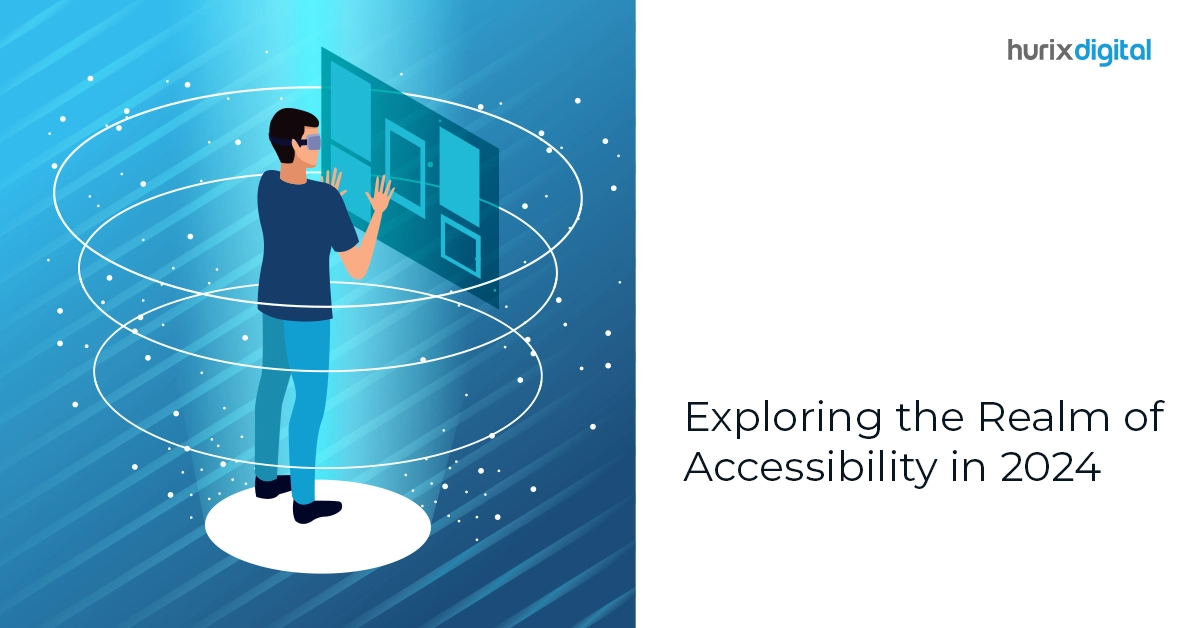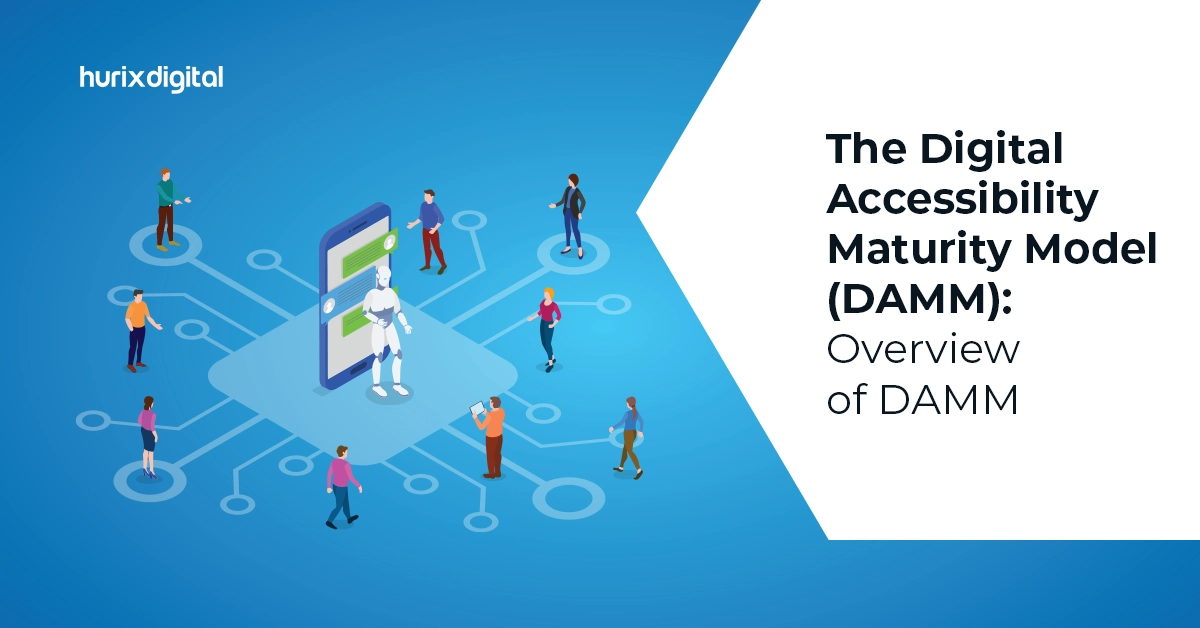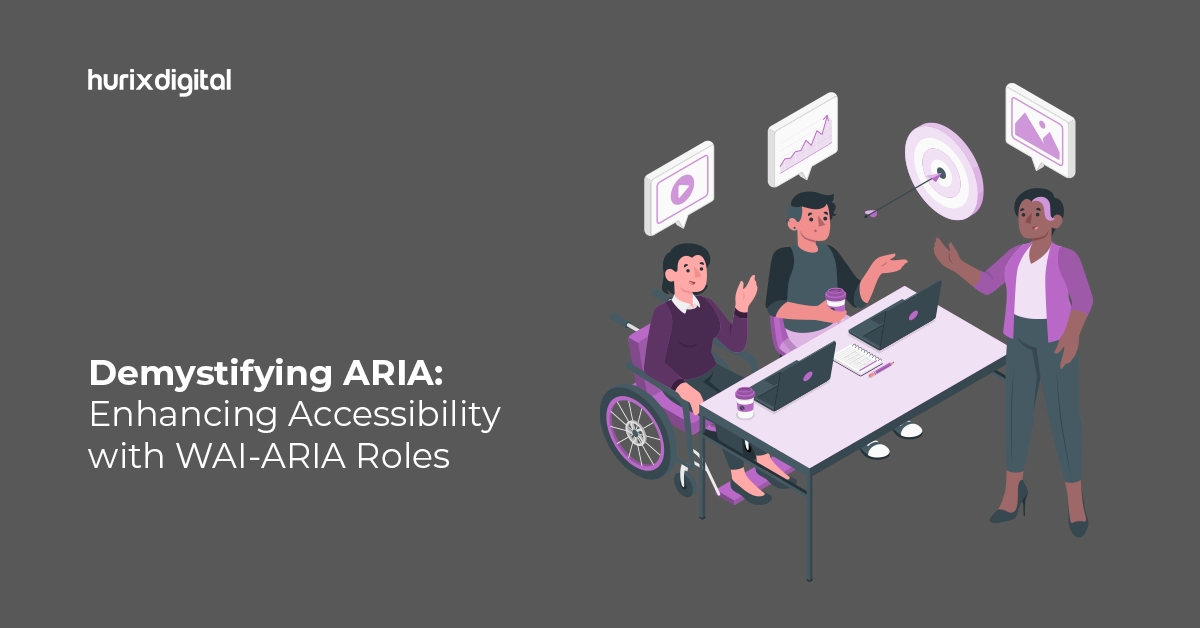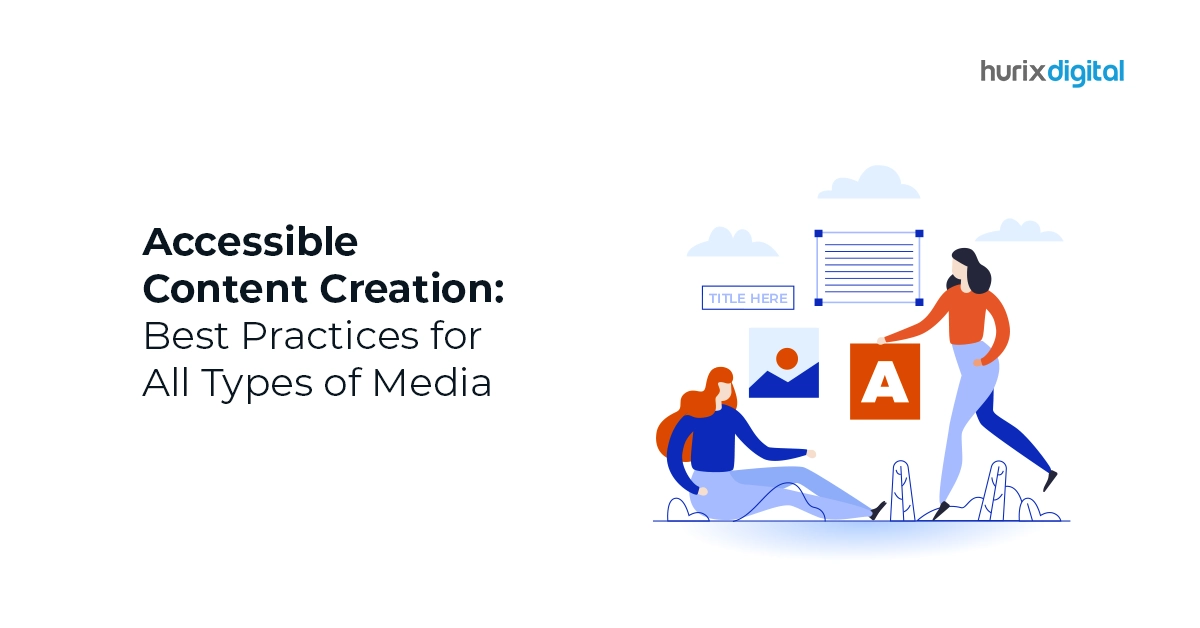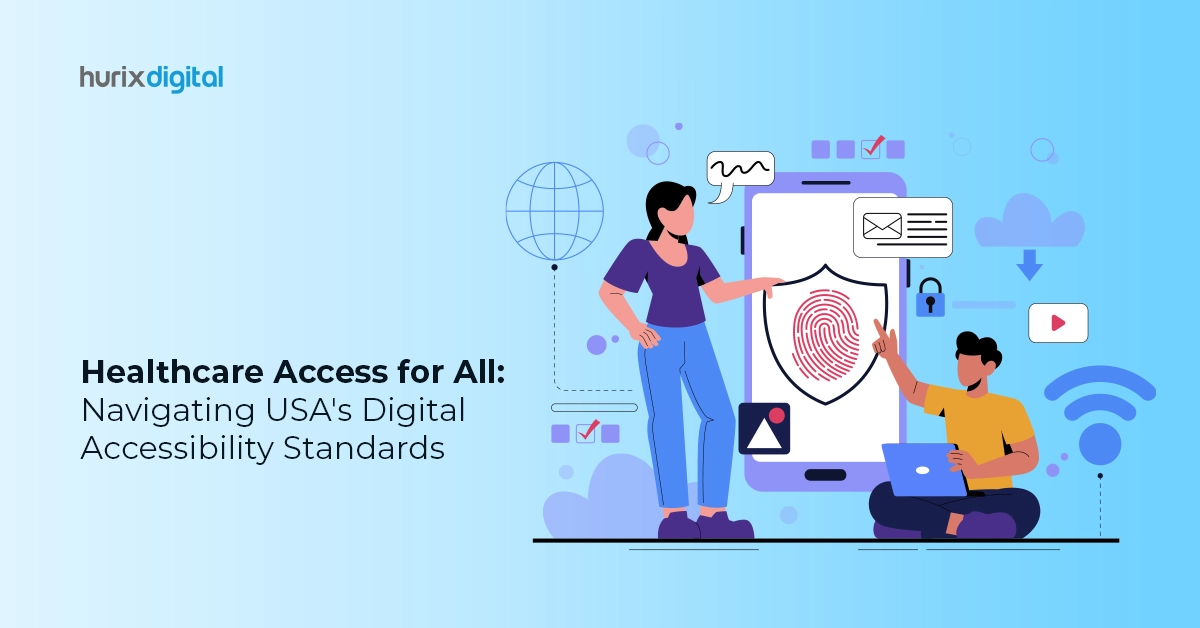Imagine an all-inclusive digital ecosystem where no one is left behind. Welcome to the world of digital accessibility. As we journey into 2024, let’s explore the transformative trends shaping a more inclusive future.
From AI’s ascendance to significant WCAG 3.0 considerations, there’s a revolution afoot in the realm of technology accessibility. And it’s not just about disability inclusion—it’s about the democratization of technology, an age of accessibility for all.
So, let’s buckle up and delve into the future of accessibility.
Table of Contents:
- What is Digital Accessibility?
- Current Trends Revolutionizing Technology Accessibility
- Diving Deeper into WCAG 3.0 Considerations for Digital Platforms
- Accepting Inclusive Design
- The Intersection of Disability Inclusion and Technology Accessibility
- Summing Up
What is Digital Accessibility?
Digital accessibility refers to the concept of making the digital world accessible and navigable for all people, regardless of physical or cognitive impairments. In other words, it means accessible to everyone on digital channels.
- For instance, think about your favorite news website. Now imagine if you’re visually impaired. To make this website accessible for you, it needs to have text-to-speech compatibility. This is a perfect example of digital accessibility.
- The Web Content Accessibility Guidelines (WCAG) are a series of guidelines for making web content more accessible.
According to a 2023 survey by WebAIM, 96.3% of homepages had detectable WCAG 2 failures. This underlines the tremendous scope for improvement in the domain of digital accessibility.
Opening up the digital universe for everyone is about more than just compliance or business. It’s about inclusivity and humanity. It’s about making technology truly accessible, one step at a time.
Also Read: Common Pitfalls in Mobile App Accessibility Testing and How to Avoid Them?
Current Trends Revolutionizing Technology Accessibility
Have you ever thought about what technology access truly means? It’s not just about owning the latest fancy gadget; it’s really about opening up the digital world to everybody. Yes, that includes individuals who might be dealing with any kind of disability, whether physical, cognitive, or even age-related.
It’s exciting to see how companies and developers across the globe are now placing greater emphasis on this, embracing the influential trends shaping the future of accessibility. Curious about what these trends are? Let’s explore some key examples together.
1. Taking Disability Inclusion to the Heart
In line with the global goal of achieving accessibility for all, more businesses are adopting an inclusive mindset and devising plans to satisfy all users’ needs. For example, many social media platforms are simplifying their interfaces and adding functionalities like voice commands, making digital communication a breeze for everyone, even those with mobility issues.
2. Accessibility Standards on the Rise
As per WCAG 3.0 considerations, companies are advised to define their accessibility standards. This ensures that websites, apps, and digital tools can be efficiently utilized by all, thereby promising the biggest surge in global accessibility.
3. AI Revolutionizing Accessibility
The fusion of AI and accessibility advancements is proving to be a game-changer. AI can aid in predicting user behavior, making suggestions, and providing a tailored experience for users with disabilities.
For instance, AI-powered voice assistants and predictive keyboards have already made notable differences, and their utility is only expected to grow in the future.
Diving Deeper into WCAG 3.0 Considerations for Digital Platforms
Web Content Accessibility Guidelines (WCAG) rockets to a new level with its 3.0 version. Launched as an imperative part of the global accessibility movement, this set of rules stands as a watchdog for digital accessibility, ensuring the web remains an inclusive platform for everyone.
- Amplified Clarity: WCAG 3.0 provides distinct rules. Its language simplicity focuses on providing clear explanations, which means no more grappling with tech jargon only developers can decipher.
- Comprehensive and Holistic Evaluations: In the new framework, a website’s accessibility is calculated using an aggregation scoring system. This system considers all aspects, making the process less tedious and more representative of a user’s experience.
- Fluid Conformance Model: WCAG 3.0 shatters barriers by introducing a dynamic approach—the Conformance Model. It transcends beyond the former ‘Pass or Fail’ evaluation. So, if parts of your website are not accessible, not all hope is lost. Some users can still navigate it.
Take, for instance, Hurix Digital, which has been adhering to WCAG standards diligently, making its digital content universally accessible. The future of accessibility seems promising, with WCAG 3.0 considerations acting as a beacon of hope for ushering in more inclusive online experiences.
Accepting Inclusive Design
The future of accessibility holds much importance for the global accessibility community. Turning our gaze to the much-anticipated WCAG 3.0, we find several points of focus that are crucial in 2024.
- The new guidelines put human needs above all, driving efforts to make digital content more accessible and usable for individuals with disabilities. Consider how your digital accessibility strategies can be in line with this user-first strategy.
- WCAG 3.0 differs from the binary pass/fail methodology that characterizes WCAG 2.0. Now, you can provide your users with a more accurate and individual adaptation.
- There is a need to pay close attention to the holistic accessibility that forms part of WCAG 3.0. Now, the time has come to consider accessibility outside of your web content. Consider how you can practice inclusive design throughout your digital presence.
As we navigate the realm of accessibility in 2024, it’s paramount that we embrace these new standards and create a more inclusive digital world.
The Intersection of Disability Inclusion and Technology Accessibility
As the clock ticks into 2024, the amalgamation of disability inclusion and technology accessibility continues to make giant strides. Compliance with standards has grown beyond just a requirement; it’s now about nurturing an all-encompassing space where digital platforms open their doors wide open to every user, irrespective of their abilities.
Picture this: an e-commerce platform integrating voice-assist technology, making site navigation and shopping a breeze for users with visual impairments. The essence of such advancements lies in elevating the user experience and paving the path toward true accessibility for all.
| Stakeholder | Role in Accessibility |
| Designers | Implementing inclusive design principles from the initial stages of product development. |
| Developers | Building functionalities with WCAG 3.0 considerations to ensure global accessibility. |
| AI experts | Developing AI capabilities that enhance digital accessibility and improve the user experience. |
| End-users | Providing crucial feedback to guide further accessibility advancements. |
Also Read: How ISO Standards Enhance Digital Accessibility?
Summing Up
There’s no denying that advancements in technology and AI are paving the way for more inclusive design and improved digital accessibility. While the realm of accessibility continues to evolve rapidly, 2024 promises even more exciting trends. Crucially, this journey towards universal accessibility can be daunting without the right partner.
Effortlessly navigating the intricate landscape of global accessibility demands expertise and familiarity with WCAG 3.0 considerations, among other critical aspects. If you feel overwhelmed or unsure about your accessibility strategies, look no further than Hurix Digital.
As a frontrunner in digital content solutions and creative services, Hurix Digital empowers clients with AI-driven solutions and tailors effective accessibility approaches for different platforms. The team carries out thorough accessibility audits, needed remediations, content creation, and testing to ensure alignment with crucial accessibility standards.
Contact Hurix Digital and embark on your journey to enhanced digital accessibility today!


